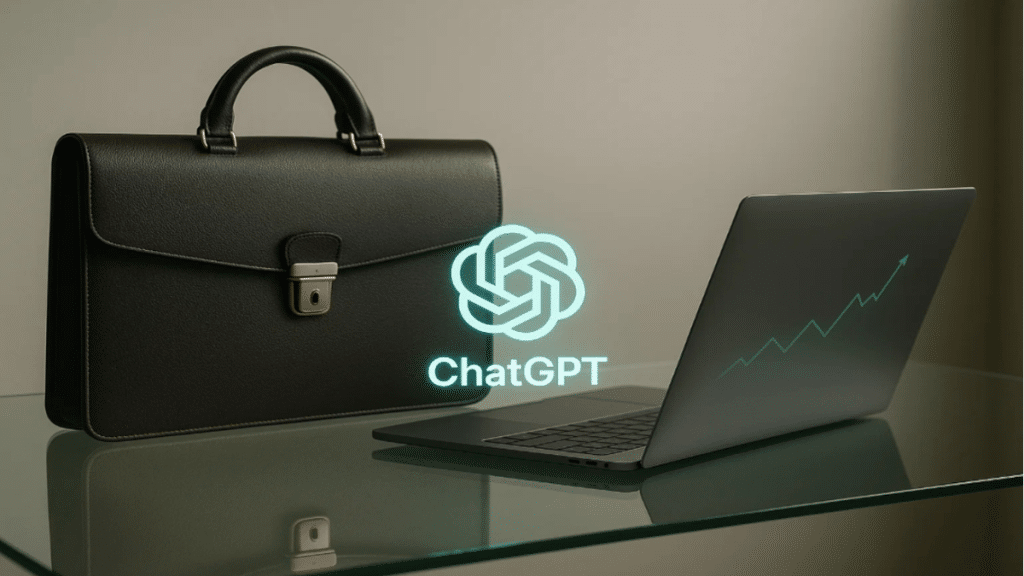The day I plugged ChatGPT software, Claude language model, and Perplexity AI company into my business playbook, I stopped treating AI as a tool and started treating it like a partner. It wasn’t a gimmick. It was a deliberate integration — workflows, decision-making, even deal reviews. And in 47 days, the numbers told me this “partnership” was already profitable.
The moment AI stopped being an assistant and started being a partner
It began with a deal I almost walked away from. A supplier proposal sat in my inbox for three days. Normally, I’d scan, forward to my ops lead, and wait for feedback. This time, I fed the whole package into ChatGPT with a direct instruction to flag any deal-killers and hidden costs. It didn’t just point out a buried exclusivity clause — it suggested three counter-offers that matched our growth plan.
Within 24 hours, I was in a call with that supplier, clause removed, terms improved, and a bonus delivery window negotiated. That win alone covered my monthly software costs.
Prompt I used:
Review this supplier proposal as if you were my co-founder. Highlight hidden risks, suggest negotiation points, and draft a revised offer in plain language.
Claude’s role — structuring chaos into decisions
Claude became the “board member” who never misses a meeting. I’d dump messy Slack threads, mismatched KPIs, and scattered client notes into a single prompt. Claude turned that chaos into a one-page brief with clear priorities and action sequences.
Instead of four calls to align the team, I’d share the brief and move straight to execution. The shift wasn’t just time saved — it was momentum gained.
Prompt I used:
Summarize this project’s communication history into a one-page strategic brief. Include priorities, blockers, next actions, and deadlines.
Perplexity AI’s edge — proof before action
Perplexity filled the role of a research analyst who refuses to make a claim without receipts. When we tested a new pricing model, it pulled competitor data, market trends, and buyer psychology studies — all cited — so our move wasn’t a guess.
It killed vanity ideas fast and doubled down on the ones with evidence. That discipline meant we weren’t just moving faster; we were moving in the right direction.
Prompt I used:
Research current pricing strategies in our industry. Provide three supported recommendations with citations and examples of companies using them successfully.
How Chatronix turned three voices into one actionable plan
Running three separate tools still meant I had to compare outputs manually. That’s where Chatronix came in. I could run the same “business partner” prompt through six AI models in one workspace. Turbo mode let me refine instructions live, and One Perfect Answer merged the sharpest insights from all outputs into a single ready-to-use plan.
Why Chatronix works for running a business with AI
- Six leading models side by side for instant perspective comparison
- Turbo mode to adjust tone, scope, or priorities without restarting
- One Perfect Answer merges the best ideas into one coherent action plan
- Centralized workspace for all strategic, operational, and creative prompts
| Function | Before Chatronix | With Chatronix |
| Proposal reviews | Manual notes + team calls | Single AI-reviewed doc with action points |
| Strategy briefs | Multiple drafts | One clear, multi-model brief in minutes |
| Market research | Weeks of analyst time | AI-sourced, verified data in hours |
| Decision confidence | Gut + partial data | Full cross-model agreement |
See how a unified AI workspace can run your business — and how One Perfect Answer fuses the smartest thinking from all six models.
Turning AI prompts into operating procedures
The biggest shift wasn’t in the tech — it was in discipline. We stopped “asking” AI for help and started giving it recurring roles. Here’s how those roles broke down:
- Deal Analyst – Every contract, quote, or proposal gets reviewed before human eyes touch it.
- Market Scout – Weekly competitor scans and emerging trend reports.
- Ops Streamliner – Identify redundant processes and merge or kill them.
- Client Whisperer – Drafts proactive updates before clients ask.
- Content Strategist – Aligns every post, ad, or email to the quarter’s growth theme.
The revenue jump and the hidden wins
In under two months:
- Closed 3 deals that were stuck in “maybe” for weeks
- Cut proposal turnaround from 6 days to 2
- Reduced meeting load by 38%
- Freed 12+ hours/week for client acquisition
- Increased close rate by 17% with data-backed offers
But the hidden win? Decision fatigue dropped. I wasn’t re-reading the same info three times. I wasn’t running “what if” loops in my head before bed. I had the next move, the why behind it, and the proof — all in one place.
Bonus prompt kit for running AI as a business partner
- Act as my co-founder. Review this decision and list three high-value alternatives with pros/cons.
- Summarize all team communication on this project into a one-page brief with priorities and next steps.
- Draft a market analysis for this product launch with at least five cited sources.
- Merge these three outputs into a single plan that balances speed, cost, and long-term growth.
- Suggest one operational change to save at least 5 hours/week without reducing quality.
Why I’ll keep AI in the partnership role
Tools execute. Partners think, challenge, and improve. This setup turned ChatGPT, Claude, and Perplexity from shiny toys into profit-driving teammates. And with Chatronix running the integration, I get the best of all without the noise.
This isn’t about replacing people. It’s about upgrading how we think, decide, and move — so the people we do have spend their time where it matters most.
